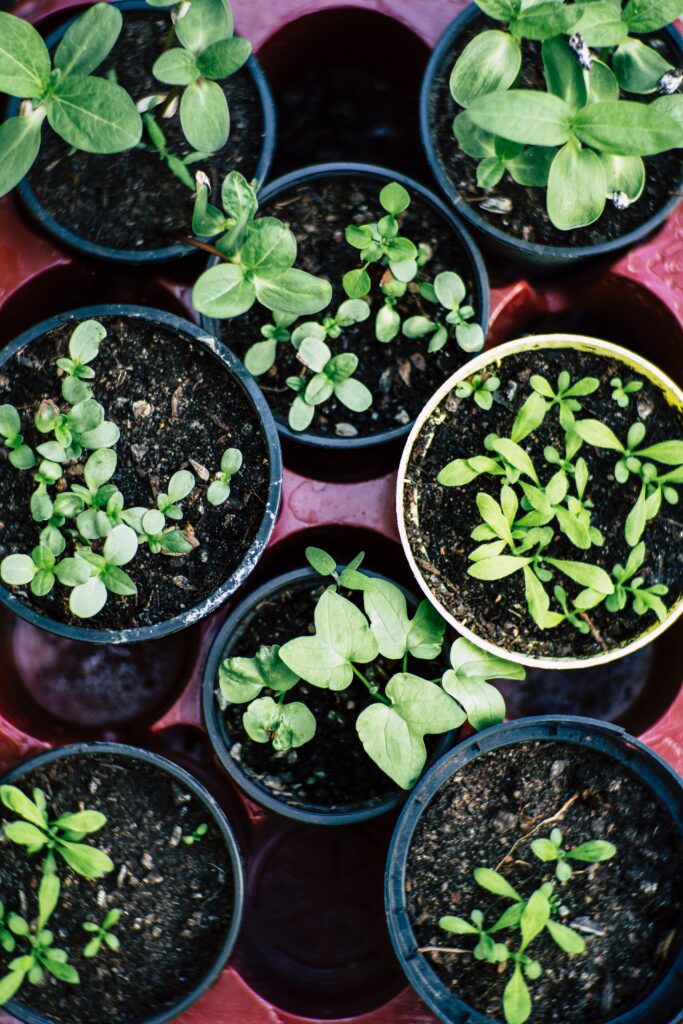
Are you a proud basil gardener but find yourself not getting the most out of your harvest? Don’t worry, we’ve got you covered! In this blog post, we will unveil ten expert tips that will help you maximize your basil harvest like never before. Whether you’re a seasoned gardener or just starting with your herb garden, these tricks are sure to take your basil yield to a whole new level. Basil, with its fragrant leaves and versatile flavor, is a beloved herb in countless culinary dishes. From homemade pesto to fresh Caprese salads, the uses for basil are endless. However, knowing exactly when and how to harvest this vibrant herb can make all the difference in the world. Our handpicked selection of tips will guide you through the process of harvesting basil like a pro. We will delve into the best time to harvest, the tools you’ll need, and the proper techniques to ensure your basil plants stay healthy and abundant. So, grab your gardening gloves and get ready to dive into the wonderful world of basil harvesting! Before we jump into the tips, let’s address the most common question: how to harvest basil effectively? By following these ten essential guidelines, you’ll soon be on your way to a bountiful basil harvest. Say goodbye to lackluster yields and hello to a flourishing herb garden that will have your friends and family begging for your secret recipe. So, let’s get started and unlock the secrets to maximizing your basil harvest!

The Best Time to Harvest Basil
Knowing the best time to harvest basil is crucial for maximizing its flavor and aroma. The ideal time to harvest basil leaves is in the morning, after the dew has dried but before the sun gets too hot. This is when the essential oils in the leaves are at their peak, resulting in a more intense flavor.
When harvesting basil, it’s important to choose mature leaves that are fully developed. Look for leaves that are vibrant green and have a slightly glossy appearance. Avoid harvesting young or yellowing leaves as they may not have developed their full flavor yet.
To harvest basil, simply use a pair of clean garden shears or sharp scissors to cut the stems just above a leaf node. This will encourage new growth and ensure that your plant remains healthy and productive throughout the growing season.
Proper Technique for Harvesting Basil Leaves
When it comes to harvesting basil leaves, there is a proper technique that ensures minimal damage to the plant while maximizing yield:
1. Identify the mature leaves: Look for leaves that are fully grown and vibrant green in color.
2. Position your shears: Hold your garden shears or scissors just above a leaf node, which is where the leaf meets the stem.
3. Make a clean cut: With a swift motion, cut the stem just above the leaf node, leaving enough room for new growth to emerge.
4. Repeat the process: Continue harvesting basil leaves by moving around the plant and selecting mature leaves from different stems.
By following this technique, you’ll ensure that your basil plants remain healthy and continue to produce an abundant harvest throughout the growing season.
Pruning Techniques for Basil Plants
In addition to harvesting individual leaves, pruning your basil plants can help promote bushier growth and increase overall yield. Here are two common pruning techniques:
1. Pinching:
To encourage branching and prevent your basil plants from becoming too leggy, pinch off the top set of leaves on each stem when they reach about six inches in height. This will stimulate lateral growth and result in a fuller plant with more leaves to harvest.
2. Cutting back:
If your basil plants have become tall and spindly, it’s beneficial to give them a more severe haircut. Using clean garden shears or scissors, cut back the entire plant to about half its height. This will rejuvenate the plant and promote new growth from lower nodes.
Both pinching and cutting back can be done throughout the growing season as needed to maintain healthy and productive basil plants.
Maximizing Basil Yield through Pinching
In addition to promoting bushier growth, pinching off flower buds can also help maximize your basil yield. When basil plants start to produce flowers, they shift their energy from leaf production to seed production. By removing the flower buds, you redirect the plant’s energy back into leaf growth, resulting in a larger harvest.
To pinch off flower buds, simply use your fingers or a pair of garden shears to remove them as soon as they appear. Be sure to check your basil plants regularly for any signs of flowering and promptly remove the buds to maintain a continuous supply of fresh leaves.

Harvesting Basil Flowers for Seed Production
If you’re interested in saving basil seeds for future planting, allowing some of your basil plants to flower can be beneficial. Basil flowers are not only beautiful but also attract pollinators to your garden.
To harvest basil flowers for seed production, wait until the flowers have fully bloomed and started to dry out. Cut the entire flower stalk and place it upside down in a paper bag or envelope. Hang the bag or envelope in a cool, dry place for about two weeks until the seeds have fully dried.
Once dry, gently crush the flower heads to release the seeds and separate them from any remaining plant material. Store the seeds in an airtight container in a cool, dark place until you’re ready to plant them.
How to Store Freshly Harvested Basil
To keep your freshly harvested basil leaves fresh and flavorful for longer, proper storage is key:
1. Remove any damaged or yellowing leaves: Before storing your basil, inspect each leaf and remove any that show signs of damage or discoloration.
2. Rinse and dry: Give your harvested basil leaves a gentle rinse under cold water to remove any dirt or debris. Pat them dry with a clean kitchen towel or paper towels.
3. Store in a jar or container: Place the basil leaves in a glass jar or an airtight container lined with a damp paper towel. This will help maintain the leaves’ moisture and prevent them from wilting.
4. Refrigerate or freeze: Depending on your needs, you can either store your basil in the refrigerator or freeze it for longer-term storage. In the refrigerator, basil will stay fresh for up to a week. To freeze basil, blanch the leaves briefly in boiling water, then plunge them into an ice bath before patting them dry and placing them in freezer-safe bags or containers.
By following these storage tips, you can enjoy fresh basil long after your harvest and savor its vibrant flavor in various culinary creations.
Creative Ways to Use Excess Basil
If you find yourself with an abundance of freshly harvested basil, here are some creative ways to make the most of it:
Preventing Pests and Diseases in Basil Plants
To ensure healthy and productive basil plants, it’s important to take preventive measures against common pests and diseases:
Conclusion: Mastering Basil Harvesting Techniques for Abundant Yields
In conclusion, mastering the art of harvesting basil is essential for maximizing your yield and enjoying the full flavor of this versatile herb. By following the ten expert tips outlined in this blog post, you’ll be well on your way to becoming a basil harvesting pro.
Remember to harvest basil leaves at the right time, use the proper tools, and employ correct techniques to ensure healthy plants and abundant yields. Don’t forget to pinch off flower buds, harvest basil flowers for seed production if desired, and store your freshly harvested basil properly for long-lasting freshness.
And when you find yourself with excess basil, get creative! Make homemade pesto, infuse oils and vinegars, freeze in ice cube trays, or dry it for later use. The possibilities are endless.
Lastly, take preventive measures against pests and diseases to keep your basil plants thriving throughout the growing season.
So go ahead and put these tips into practice. Maximize your basil harvest today and elevate your culinary creations with the vibrant flavors of fresh basil!







Leave a Reply